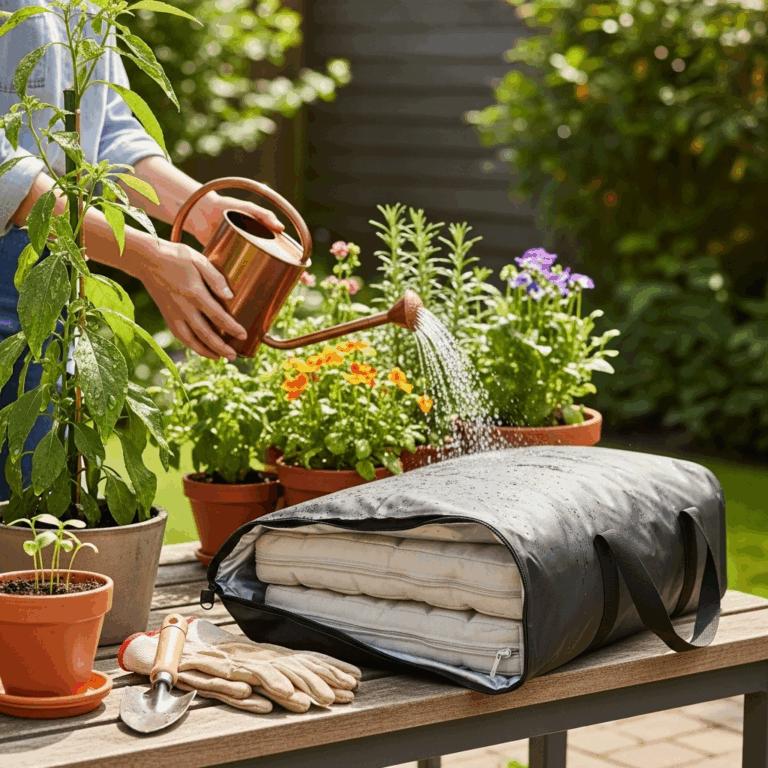Indoor games for kids offer endless fun and essential development, providing screen-free entertainment that boosts creativity, problem-solving, and social skills. Discover engaging, easy-to-set-up games that will keep your little ones entertained and learning, no matter the weather.
Keeping children entertained indoors, especially on rainy days or when outdoor play isn’t an option, can feel like a puzzle. You want activities that are fun and engaging, but also beneficial for their minds and bodies. It’s easy to fall into the trap of relying on screens, but there are so many wonderful, creative, and genuinely fun indoor games that can spark joy and encourage learning. This guide is here to show you how simple and rewarding it can be to create a world of adventure right inside your home, without needing a lot of fancy equipment. Get ready to rediscover the magic of play!
Why Indoor Games Are More Than Just Fun
Indoor games are incredibly important for a child’s development, offering a treasure trove of benefits that go far beyond simple amusement. They act as vital tools for nurturing cognitive abilities, fostering creativity, and building essential social skills. When children engage in play, they’re not just passing time; they’re actively learning about the world around them, experimenting with ideas, and growing as individuals.
These games provide a safe space for kids to test the boundaries of their imagination, solve problems, and learn to cooperate with others. They help develop fine and gross motor skills, enhance concentration, and improve memory. Plus, in today’s digital age, screen-free play is more crucial than ever for a child’s balanced development. Let’s explore how to harness the power of these fantastic activities.
Getting Started: Essential Elements for Indoor Game Success
Before diving into specific games, let’s set the stage for successful indoor play. The right approach can make any game more enjoyable and beneficial. Think of these as the building blocks for a fantastic playtime experience.
Creating a Playful Space
Designating a specific area for games can signal to children that it’s time to switch gears and engage in imaginative play. This doesn’t need to be a dedicated playroom – it could be a corner of the living room, a cleared space on the dining table, or even a blanket fort!
- Clear the Clutter: A tidy space makes it easier to focus on the game and reduces distractions.
- Comfort is Key: Ensure the area is comfortable with cushions, blankets, or a soft rug.
- Easy Access to Materials: Keep game supplies organized and accessible so children can set up and tidy away with minimal fuss.
The Magic of Materials
You don’t need a professional setup for incredible indoor fun. Many of the best games use everyday items found around the house. This also teaches children resourcefulness and appreciation for what they have.
- Cardboard Boxes: These are artists’ canvasses, rocket ships, and fort components all in one.
- Craft Supplies: Crayons, markers, safety scissors, glue sticks, construction paper, and pipe cleaners open up a world of creative possibilities.
- Household Items: Pillows, blankets, socks, empty toilet paper rolls, and kitchen utensils can be transformed into game props.
- Building Blocks: LEGOs, Duplo, or wooden blocks are timeless tools for imagination and engineering.
Setting the Mood
Sometimes, a little atmosphere goes a long way. Music can set the tone, whether it’s upbeat tunes for an action game or calming melodies for a quiet activity. Role-playing prompts or costumes can also ignite imagination.
Genius Indoor Games for Every Age and Interest
Now, let’s get to the good stuff! Here are some fantastic indoor games designed to spark joy, encourage learning, and keep your kids happily engaged. We’ve categorized them by skill focus to help you choose the perfect fit.
Creative & Imaginative Play
These games encourage children to think outside the box, tell stories, and bring their dreams to life.
1. Blanket Fort Adventure Builders
Few things capture a child’s imagination like a fort! Building one is a creative process in itself, and the fort then becomes a canvas for countless adventures.
- Gather Supplies: Collect blankets, sheets, pillows, chairs, couch cushions, clothespins, and string.
- Construction Time: Drape blankets over furniture to create walls and a roof. Use clothespins to secure fabrics and pillows for comfort.
- Decorate!: Let kids draw on large sheets of paper to make signs or posters for their fort.
- Themed Play: Once built, the fort can be a castle, a spaceship, a cozy reading nook, or a secret hideout for a spy mission.
2. Storytelling Charades
A delightful twist on a classic, this game blends acting with narrative construction.
- Preparation: Write down simple story elements (e.g., “a brave knight,” “a lost puppy,” “a magical tree,” “an alien visitor”) on slips of paper. Also, write down simple actions (e.g., “eating spaghetti,” “flying a kite,” “tiptoeing,” “shivering”).
- How to Play: One person draws a story element and an action. They then act out the story element performing the action, without speaking. The other players guess what they are acting out.
- Variations: Encourage players to add to the story as they guess, creating a collaborative narrative.
3. DIY Play-Doh or Cloud Dough Creations
Sensory play is vital for young children’s development. Making and playing with homemade doughs is a fantastic activity.
Easy Play-Doh Recipe:
Mix 2 cups flour, 1 cup salt, 2 tablespoons cream of tartar, and 2 tablespoons vegetable oil in a bowl. Slowly add 1 cup of boiling water while stirring. Knead until smooth. Add food coloring for vibrant colors.
Simple Cloud Dough Recipe:
Combine 8 cups of flour with 1 cup of baby oil or vegetable oil in a large bin. Mix until it has a soft, crumbly texture that holds its shape when squeezed.
Play Ideas: Encourage sculpting animals, food, letters, or creating imaginative landscapes.
Cognitive & Problem-Solving Games
These activities sharpen young minds, encouraging logic, critical thinking, and memory.
4. Indoor Obstacle Course Challenge
Transform your living room into an exciting obstacle course that challenges agility and problem-solving.
- Plan the Route: Map out a path using furniture and household items.
- Set Challenges: Include tasks like crawling under a table, stepping over pillows, jumping from one designated spot to another, or balancing a soft toy on their head.
- Time Trials: For older kids, have them race against the clock or their previous best time.
- Safety First: Ensure all obstacles are safe and age-appropriate. Remove any tripping hazards.
5. Scavenger Hunt Mania
Scavenger hunts are excellent for developing observation skills and teaching children to follow clues.
Simple Scavenger Hunt:
- Create Clues: Write simple riddles or picture clues that lead from one location to the next. For younger children, use pictures. For older ones, use riddles or simple written clues.
- Hide the Prize: The final clue should lead to a small “treasure” – this could be a favorite book, a small toy, or a healthy snack.
- Location Ideas: Hide clues under a cushion, inside a shoe, behind a plant, or taped to a window.
A great resource for understanding child development and play is available from the Centers for Disease Control and Prevention (CDC), which highlights how play contributes to cognitive growth.
6. Memory Matching Game
This classic game is fantastic for improving short-term memory and concentration.
- Preparation: Use a deck of cards, cut out pairs of identical pictures from magazines, or draw simple matching pairs on small pieces of paper.
- Set Up: Lay all the cards or pictures face down on a flat surface.
- How to Play: Players take turns flipping over two cards at a time, trying to find a matching pair. If they find a match, they keep the pair and get another turn. If not, they flip the cards back over, and it’s the next player’s turn.
- Increasing Difficulty: Start with fewer pairs for younger children and gradually increase the number as their memory improves.
Active and Energy-Burning Games
When kids need to move, these games are perfect for getting their wiggles out indoors.
7. Indoor Bowling Fun
Turn empty water bottles or toilet paper rolls into bowling pins!
- Set Up Pins: Arrange 6-10 empty plastic bottles or toilet paper rolls in a triangular formation at one end of a hallway or open space.
- Use a Soft Ball: A soft foam ball or a rolled-up pair of socks works best to avoid accidents.
- Take Turns: Children take turns rolling the ball to knock down the pins. Keep score if they’re ready for it!
8. Dance Party Freeze!
A simple, energetic way to burn off steam and have a blast.
- Turn Up the Music: Play your children’s favorite high-energy songs.
- Dance!: Let everyone dance freely and enthusiastically.
- Freeze!: At random intervals, shout “Freeze!” Everyone must stop dancing and hold their pose until the music starts again. Anyone who moves while frozen is out (or just does a silly dance as a penalty!).
9. Simon Says, “Jump!”
This classic game is great for listening skills and physical activity.
- One Leader: Designate one person as “Simon.”
- Give Commands: Simon gives instructions starting with “Simon says…” (e.g., “Simon says touch your nose,” “Simon says hop on one foot”).
- The Catch: Players must only follow commands that begin with “Simon says.” If Simon gives an instruction without saying “Simon says” first (e.g., “Jump up and down!”), and a player does it, they are out (or perform a silly task).
- Rotate Simon: Let different children take turns being Simon.
Quiet & Focused Games
When it’s time to wind down or focus on finer details, these games are perfect.
10. Building & Construction Challenges
Blocks, LEGOs, and other building toys provide endless opportunities for problem-solving and creativity.
Challenge Ideas:
- Build the tallest tower you can.
- Create a vehicle that can roll.
- Design a house for a favorite toy.
- Recreate a famous landmark using provided pictures.
Studies from organizations like the National Association for the Education of Young Children (NAEYC) emphasize the profound impact of play on early childhood development, covering cognitive, social, and physical domains.
11. “I Spy” with My Little Eye
A simple game that encourages observation and vocabulary building.
- Choose a Player: One person starts by saying, “I spy with my little eye, something…” and then describes the color of an object in the room (e.g., “…something green”).
- Guessing Game: The other players look around the room and try to guess what the object is.
- Taking Turns: Once an object is guessed correctly, the player who guessed it gets to go next and choose something to spy.
- Variations: Instead of color, you can give clues about shape, texture, or the first letter of the object.
12. Puzzles and Pattern Play
Jigsaw puzzles, shape sorters, and pattern blocks are excellent for developing spatial reasoning and fine motor skills.
Ideas:
- Work on age-appropriate jigsaw puzzles together.
- Use pattern blocks to create visual designs or replicate patterns from a book.
- Have children sort small toys or blocks by color, size, or shape.
Games Using Common Household Items: A Quick Guide
Sometimes, the most ingenious games come from thinking creatively about everyday objects. Here’s a glance at how common items can be transformed into hours of fun.
| Household Item | Games & Activities | Skills Developed |
|---|---|---|
| Cardboard Boxes | Fort building, car/rocket ship construction, puppet theater, maze creation | Creativity, problem-solving, spatial reasoning, fine motor skills |
| Pillows & Blankets | Fort building, obstacle course elements, “the floor is lava” game, cozy reading nooks | Gross motor skills, balance, imagination, comfort and security |
| Toilet Paper/Paper Towel Rolls | Binoculars, crafting materials, bowling pins, musical instrument shakers (filled with rice/beans) | Creativity, fine motor skills, imaginative play, sound exploration |
| Socks | Sock puppets, sock balls for throwing/kicking, matching games | Creativity, storytelling, fine motor skills, color recognition |
| Kitchen Utensils (Plastic/Safe) | “Cooking” pretend meals, musical instruments (pots and pans as drums), sorting and scooping activities | Imaginative play, sensory exploration, cause and effect, fine motor skills |
The Essential Benefits of “Unplugged” Play
In an era dominated by screens, it’s worth reiterating why games that don’t involve electronics are so critical. These “unplugged” activities are the bedrock of holistic child development.
Cognitive Development
Problem-solving, critical thinking, memory, and concentration are all significantly boosted through engaging with physical games and puzzles. Children learn to strategize, adapt, and overcome challenges.
Social and Emotional Growth
Playing together teaches children invaluable lessons in cooperation, sharing, negotiation, and empathy. They learn to understand different perspectives and manage their emotions when faced with winning or losing.
Physical Well-being
Active indoor games promote gross motor skills, coordination, balance, and overall physical health. Even quieter games often involve fine motor skills, which are crucial for tasks like writing and drawing.
Creativity and Imagination
Without pre-programmed narratives or graphics, children are free to invent their own worlds, characters, and stories. This imaginative freedom is essential for innovation and self-expression.
Reduced Screen Time
Offering compelling alternatives to digital entertainment is key to establishing healthy screen time habits. Engaging in physical play provides a much-needed balance.
Frequently Asked Questions (FAQ)
What are the best indoor games for toddlers?
For toddlers, focus on sensory and simple motor skill games. Think large building blocks, soft balls to roll or kick, simple shape sorters, playing with Play-Doh or kinetic sand, and singing/dancing games. Reading books together and building “gentle” blanket forts can also be very engaging.
How can I make indoor games more exciting for older kids?
Involve them in the planning! For older kids, introduce more complex challenges, strategy-based games, “escape room” style puzzles, or elaborate scavenger hunts. Team-based games or timed challenges can also increase excitement. Let them be the “game master” sometimes!
Do indoor games really help with a child’s development?
Absolutely! Indoor games are crucial for cognitive development (problem-solving, memory), social-emotional growth (sharing, cooperation), physical skills (gross and fine motor), and fostering creativity and imagination. They offer a well-rounded learning experience.
What if I don’t have many toys or supplies?
The beauty of many indoor games is that they use everyday household items! Cardboard boxes, pillows, blankets, socks, and even empty kitchen rolls can be transformed into hours of fun. Focus on the process and imagination rather than expensive store-bought toys.



